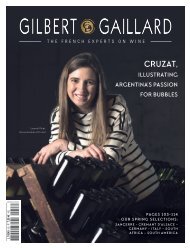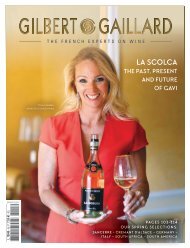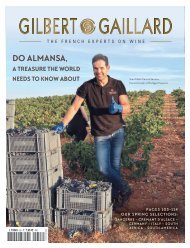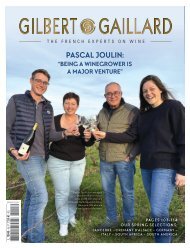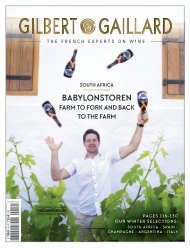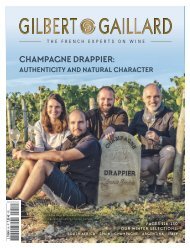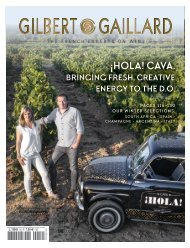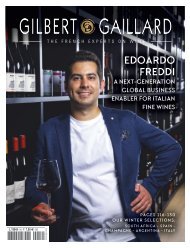Create successful ePaper yourself
Turn your PDF publications into a flip-book with our unique Google optimized e-Paper software.
BORDEAUX<br />
FOCUS<br />
THE ISSUES AT STAKE FOR THE<br />
CRUS BOURGEOIS<br />
FRANCK BIJON, CHAIRMAN OF THE CRUS BOURGEOIS DU MÉDOC<br />
Franck Bijon, chairman of the Alliance des<br />
Crus Bourgeois, points out the current trends<br />
and issues for Crus Bourgeois wines. The<br />
process, which is clearly and properly codified,<br />
is primarily aimed at creating healthy competition<br />
within the Crus Bourgeois category. This<br />
is essential because quality is a critical factor<br />
in an era where the consumer price tag ranges<br />
from 5 to 28 euros. Bordeaux has been particularly<br />
hard hit over the past 3 to 5 years. The<br />
pricing, often designed to ensure cash-flow over<br />
the short term, is not viable over the long term<br />
and for many is below actual cost price. People<br />
talk about “fair trade for chocolate”, but perhaps<br />
they should also take an interest in wine, quips<br />
Bijon. For now, the consumer has everything to<br />
gain. Bijon suggests a contest between a Cru<br />
Bourgeois and a fourth or fifth growth Grand<br />
Cru Classé (Ed. GCC have five different levels).<br />
The quality is there, for half the price.<br />
The style of the wines is also changing. Judges<br />
have to take into consideration the wines’<br />
ageing potential. Bijon, who also happens to be<br />
MD of Vignobles Larose and their former technical<br />
director, points out that current winemaking<br />
techniques produce wines that will keep<br />
for 7 to 15 years, but are also a pleasure to drink<br />
when younger. Cellaring capacity is no longer<br />
synonymous with austerity, as used to be the<br />
case in Bordeaux.<br />
Reviewing the classification every 5 years also<br />
provides a great incentive to make quality<br />
wines. As a reminder, the classification for the<br />
Grands Crus Classés has been ‘cast in stone’<br />
since 1855, when in actual fact, the vineyards<br />
used have on occasion changed significantly,<br />
through sales and acquisitions for instance.<br />
For the Crus Bourgeois, no more than 10% of<br />
the vineyards earmarked for the Cru can change<br />
AUTUMN 2022 • GILBERT & GAILLARD - THE FRENCH EXPERTS ON WINE<br />
13



